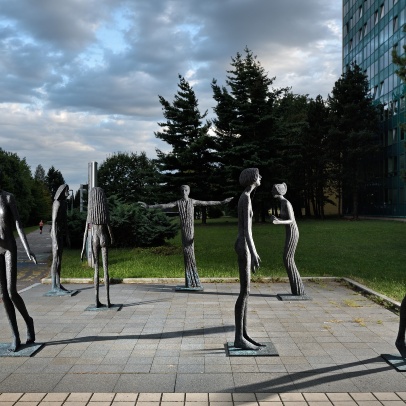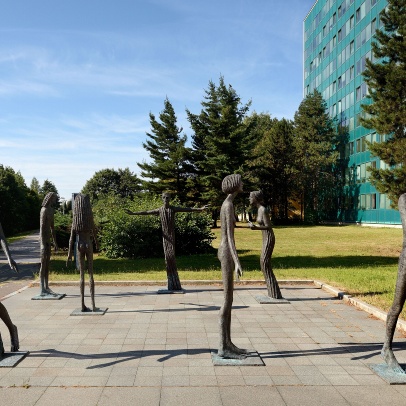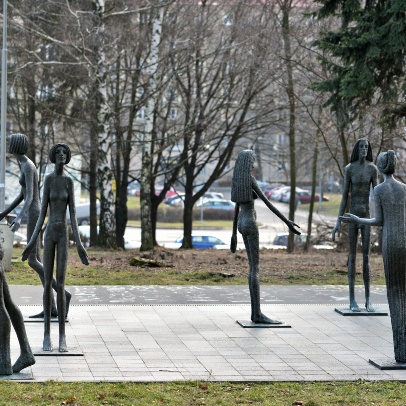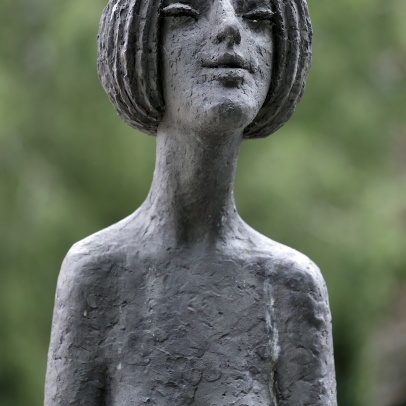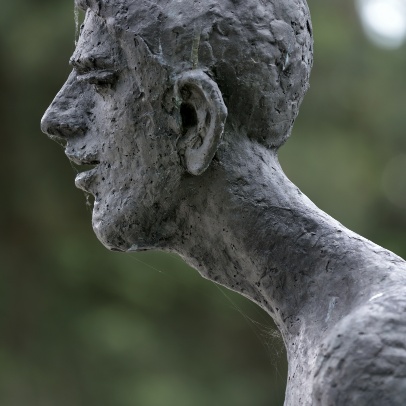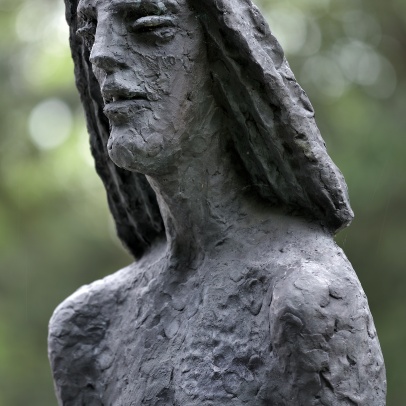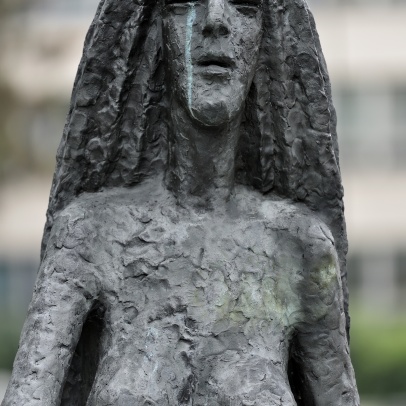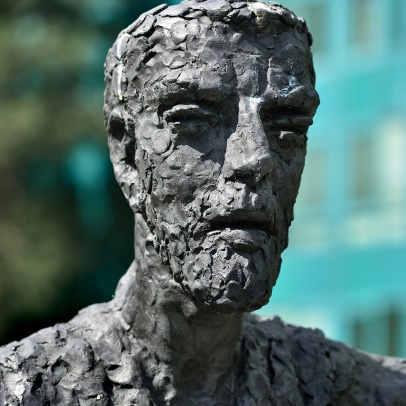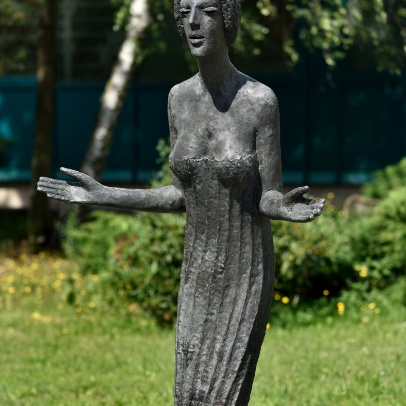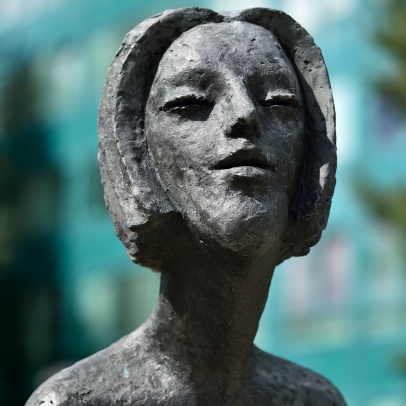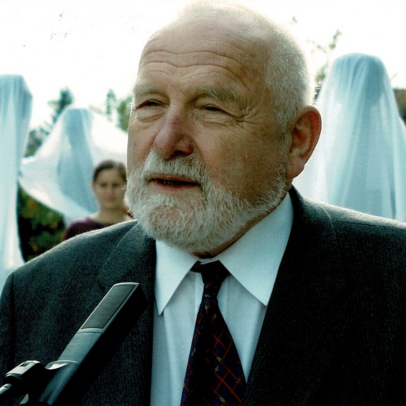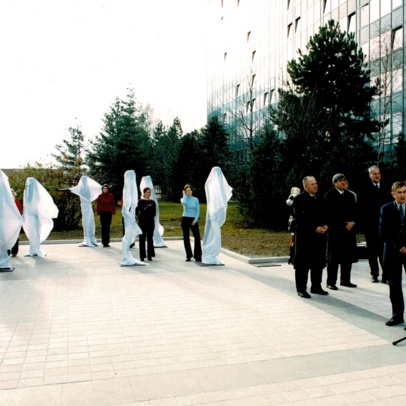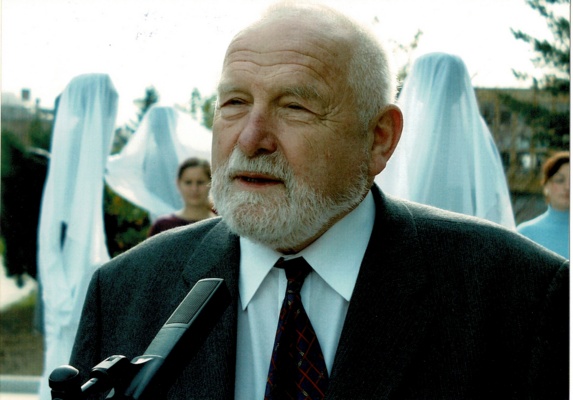Name: People / Teachers and Students
Author: Olbram Zoubek
Dating: Installed 2002
Location: the space outside the building of the VŠB-TUO Rectorate in Ostrava-Poruba
Execution: a group of seven slightly larger than life-sized figures in bronze sculpture
TEACHERS AND STUDENTS OR WHO IS WHO?
People / Teachers and Students first appeared outside the main entrance to the building of VŠB-TUO Rectorate in 2002. The sculptor created models that were, at the expense of the University, cast in bronze using the “lost-wax” technique. The group consists of seven figures, three male: Rector, Associate Professor A, and Student J, and four female: Bursar, Associate Professor E, Student M, and Student E. The author intended installation as a group of statues rather than a sculptural group. In his personal documentation, some of the statues are named differently (Kuros J., Koré E., Eve of Eden, Adam of Eden, Female Student E., Rector, Female Bursar).
Undoubtedly, the dominant figure in the group is the Rector, a prominent male figure in a long robe with arms outstretched in blessing, a gesture that draws attention. The female figure to his left in a gesture with arms opened more modestly could be Bursar. The long-haired girl and the boy in an expectant, yearning sign of movement are standing nearby, listening and perhaps wondering whether they can get closer (according to Zoubek’s personal file it is Adam and Eve of Eden). The man (Kuros J. according to Zoubek) and the woman (Student E) in opposite corners are leaving the group, setting out on a journey, each in a different direction, perhaps to their lecture rooms. The girl looking directly at the building of the Rector’s Office (Koré E.) might be considering if she shall submit an application form for the study. The sculptor himself considered the work to be an unnamed, free-standing group of statues. Additionally, academic functions and titles were assigned to some of the statues. What makes the group of sculptures also interesting is that the female element prevails in the environment of a technical university. This is particularly true when compared to the artworks designed and completed for the University in previous decades, where themes mostly from the work, technical, and scientific areas are symbolized exclusively by male figures.
It is obvious that we can play a game of who is who, from where they are coming, and where they are going with Zoubek’s figures as much as we like. We can ponder the author’s intended statement just as the artist plays with us when he projects specific people (including himself) in the faces of the figures themselves and does not disclose their true identity. Expected encounters and separations, passing, meeting, exploring and looking for the meaning of the journey itself is part of our lives, and are reflected in Zoubek’s figures and their silent presence.
